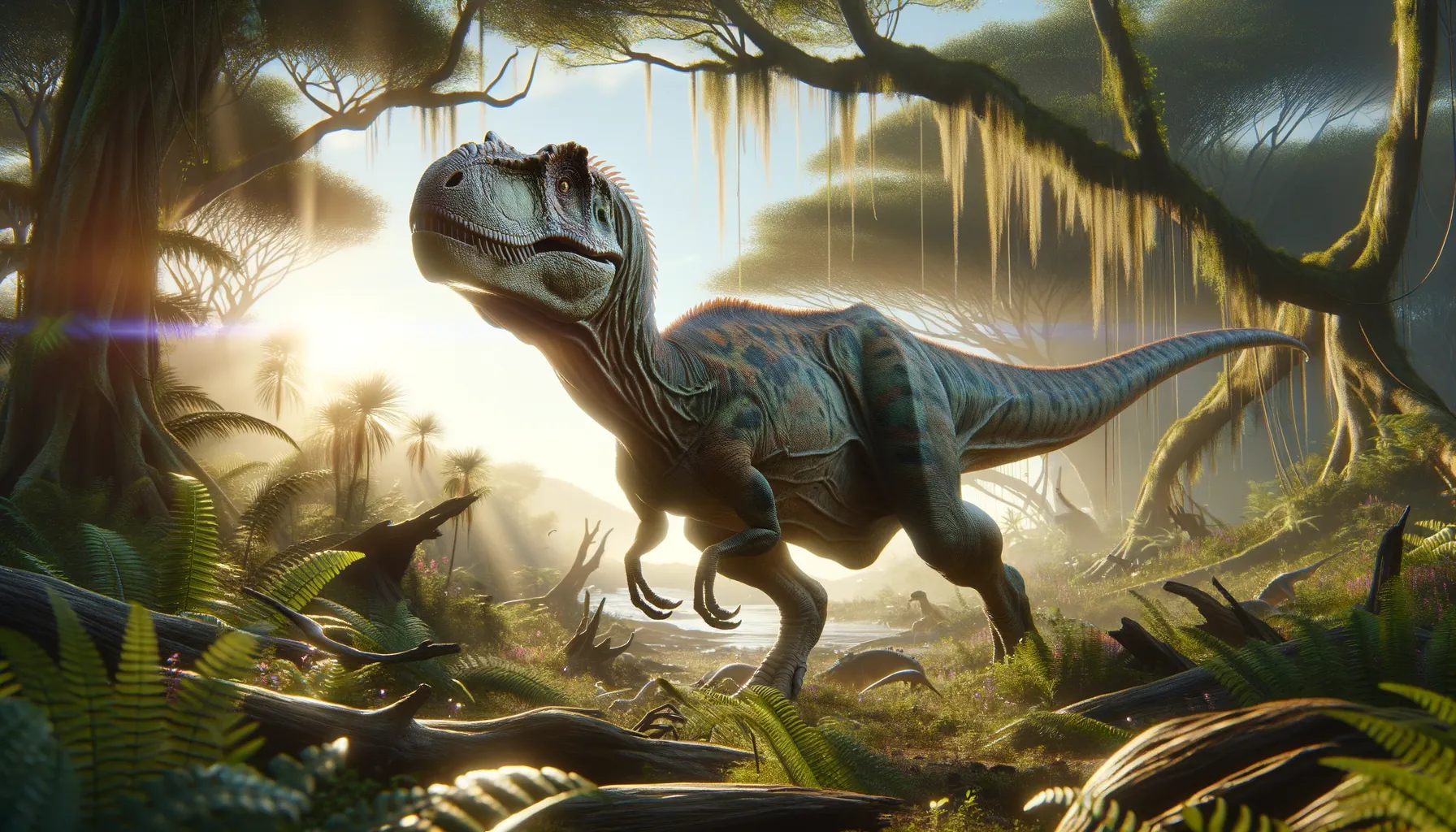
Unquillosaurus
Swift predator from ancient Argentina!
Period
Cretaceous
Length
Roughly 13 to 16 feet long.
Height
Approximately 6 to 8 feet tall.
Weight
Around 200 to 300 pounds.
Unquillosaurus was a carnivorous dinosaur from the Late Cretaceous period, known for its swift movements and moderate size. With its discovery in Argentina, it has offered significant insights into the diversity of theropod dinosaurs in South America. Its fossils have shaped our understanding of the ecological niches occupied by predators of its time.
Diet
Unquillosaurus was a carnivore, primarily feeding on small to medium-sized animals. It relied on speed and agility to catch its prey, possibly including small dinosaurs and other vertebrates.
Hunting
It likely used short bursts of speed to ambush prey, taking advantage of its agile form. Its hunting behavior was probably solitary, focusing on stealth and precision to catch its meals.
Environmental challenges
During the Late Cretaceous, Unquillosaurus faced a dynamic ecosystem with fluctuating climates and diverse flora and fauna. Competition with other predators would have posed challenges, requiring adaptability in hunting strategies. Periodic changes in vegetation and prey availability would have influenced its survival and adaptability.
Speed
Moderate runner, swift for short distances.
Lifespan
Estimated to be several decades, typical for theropods.
First discovery
Discovered in 1976 in Argentina by José Bonaparte.
Fun Facts
- Unquillosaurus was a dinosaur that lived during the Late Cretaceous period, around 70 million years ago.
- It was discovered in Argentina, making it a part of the rich dinosaur history of South America.
- Unquillosaurus is believed to have been a theropod, which means it was likely a meat-eating dinosaur.
- This dinosaur is only known from limited fossil remains, so many details about its appearance and size are still a mystery.
- Unquillosaurus is a relatively lesser-known dinosaur, which makes it an exciting subject for paleontologists interested in obscure species.
- The name 'Unquillosaurus' means 'Unquillo lizard,' named after the location where it was found.
- Like many other theropods, Unquillosaurus would have walked on two legs and possibly had sharp claws for hunting.
Growth and Development
Unquillosaurus likely went through rapid growth phases, typical of theropods, to reach maturity quickly. Its development would have included the gradual strengthening of limbs and refinement of hunting capabilities. Juveniles would have learned crucial survival skills through observation and practice.
Habitat
It lived in a diverse environment with mixed forests and open areas, offering rich resources for food and shelter. The habitat supported a variety of prey species, vital for its survival as a predator. Proximity to water sources would have been important for sustaining life in its ecosystem.
Interaction with other species
As a mid-sized predator, it would have had interactions with both prey and larger competitors. Unquillosaurus likely competed with other carnivores for food resources, adapting its strategies to avoid direct confrontations. Its presence in the ecosystem contributed to the biodiversity balance by controlling prey populations.
Natural lifespan
It had a natural lifespan of up to several decades.
Reproduction
It likely reproduced by laying eggs, like most theropods, with nests placed in concealed locations for protection. Parental care could have played a role in ensuring the survival of offspring, typical of some theropod species. Hatchlings would have been vulnerable and dependent on learning survival strategies from adults.
Social behaviour
Unquillosaurus was likely a solitary hunter, focusing on stealth rather than cooperating in groups. However, during breeding seasons, it might have come together in pairs or small groups. Social interactions were probably limited, focusing primarily on reproduction and territory defense.
Fossil locations
Fossils of Unquillosaurus have been primarily found in Argentina, providing crucial data on Cretaceous theropods in South America. The discoveries contribute to understanding the distribution and diversity of carnivorous dinosaurs in this region.
